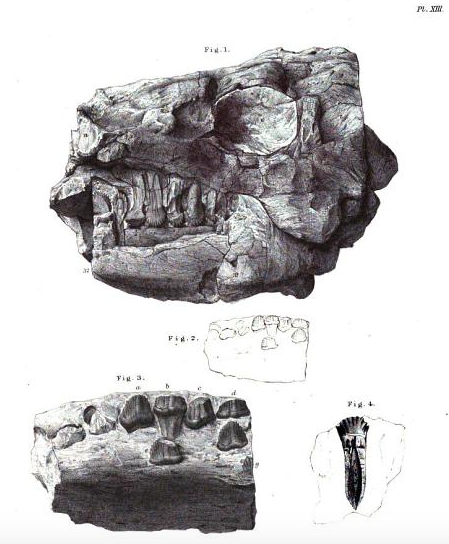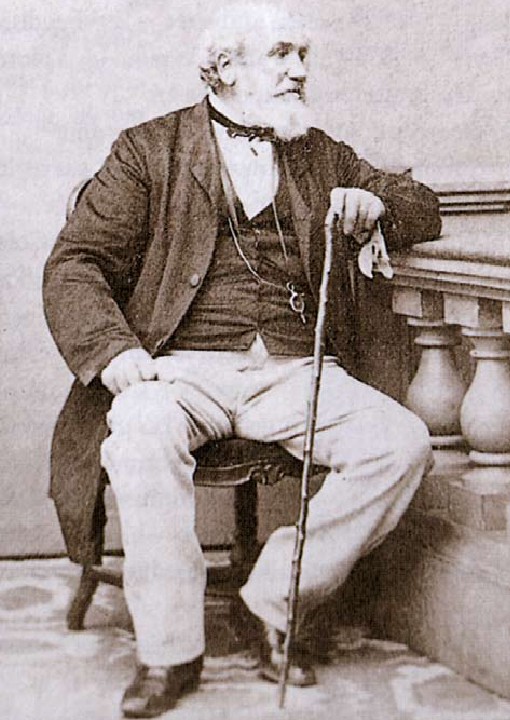|
Paranthodon
''Paranthodon'' ( ) is a genus of stegosaurian dinosaur that lived in what is now South Africa during the Early Cretaceous, between 139 and 131 million years ago. Discovered in 1845, it was one of the first stegosaurians found. Its only remains, a partial skull, isolated teeth, and fragments of vertebrae, were found in the Kirkwood Formation. British paleontologist Richard Owen initially identified the fragments as those of the pareiasaur '' Anthodon''. After remaining untouched for years in the British Museum of Natural History, the partial skull was identified by South African paleontologist Robert Broom as belonging to a different genus; he named the specimen ''Palaeoscincus africanus''. Several years later, Hungarian paleontologist Franz Nopcsa, unaware of Broom's new name, similarly concluded that it represented a new taxon, and named it ''Paranthodon owenii''. Since Nopcsa's species name was assigned after Broom's, and Broom did not assign a new genus, both names are no ... [...More Info...] [...Related Items...] OR: [Wikipedia] [Google] [Baidu] |
Stegosauria
Stegosauria is a group of herbivorous ornithischian dinosaurs that lived during the Jurassic and early Cretaceous periods. Stegosaurian fossils have been found mostly in the Northern Hemisphere, predominantly in what is now North America, Europe, Africa, South America and Asia. Their geographical origins are unclear; the earliest unequivocal stegosaurian, ''Huayangosaurus taibaii'', lived in China. Stegosaurians were armored dinosaurs (thyreophorans). Originally, they did not differ much from more primitive members of that group, being small, low-slung, running animals protected by armored scutes. An early evolutionary innovation was the development of spikes as defensive weapons. Later species, belonging to a subgroup called the Stegosauridae, became larger, and developed long hindlimbs that no longer allowed them to run. This increased the importance of active defence by the thagomizer, which could ward off even large predators because the tail was in a higher position, pointing ... [...More Info...] [...Related Items...] OR: [Wikipedia] [Google] [Baidu] |
Stegosaurid
Stegosauridae is a family of thyreophoran dinosaurs (armoured dinosaurs) within the suborder Stegosauria. The clade is defined as all species of dinosaurs more closely related to ''Stegosaurus'' than ''Huayangosaurus''.David B. Weishampel, Peter Dodson, Halszka Osmólska. The ''Dinosauria'' (2nd ed.). Berkeley: University of California Press. The name ‘Stegosauridae’ is thus a stem-based name taken from the well-represented genus – ''Stegosaurus'' (meaning ‘roofed lizard’). Fossil evidence of stegosaurids, dating from the Middle Jurassic through the Early Cretaceous, have been recovered from North America, Eurasia and Africa. The clade Stegosauridae is composed of the genera ''Stegosaurus'', ''Dacentrurus'', '' Miragaia'', ''Loricatosaurus'', and ''Kentrosaurus'', with the last considered to be at the base of the clade. The stegosaurids like all other stegosaurians were quadrupedal herbivores that exhibited the characteristic stegosaurian dorsal dermal plates. These larg ... [...More Info...] [...Related Items...] OR: [Wikipedia] [Google] [Baidu] |
Kirkwood Formation
The Kirkwood Formation is a geological formation found in the Eastern and Western Cape provinces in South Africa. It is one of the four formations found within the Uitenhage Group of the Algoa Basin – its type locality – and in the neighbouring Gamtoos Basin. Outcrops of the Kirkwood are also found along the Worcester-Pletmos, Herbertsdale-Riversdale, Heidelberg-Mossel Bay, and Oudtshoorn-Gamtoos basin lines. At these basins the Kirkwood Formation underlies the Buffelskloof Formation and not the Sundays River Formation. Geology The Kirwood Formation was formed along the southern section of South Africa during the break up of Gondwana. Dating it has proven tricky, with some regarding it as a Late Jurassic (~145 Ma) or Early Cretaceous deposit (~135 Ma). However, dating the Kirkwood's abundant volcanic ash layers by U-Pb methods is currently underway. The Kirkwood Formation is composed of sedimentary rocks deposited under fluvial conditions at or near sea level, such as var ... [...More Info...] [...Related Items...] OR: [Wikipedia] [Google] [Baidu] |
Andrew Geddes Bain
Andrew Geddes Bain (baptised 11 June 1797 – 20 October 1864), was a South African geologist, road engineer, palaeontologist and explorer. Life history The only child of Alexander Bain and Jean Geddes, both of whom died when Bain was still a young boy, Bain was baptised 11 June 1797 in Thurso, Scotland. He was raised by an aunt who lived near Edinburgh. Here he received a classical education, but no vocational training. In 1816 he emigrated to Cape Town accompanied by his uncle Lieutenant Colonel William Geddes of the 83rd Regiment, who was stationed in the Cape. He married Maria Elizabeth von Backstrom on 16 November 1818 and had 3 sons and 7 daughters. In 1822 he bought property in Graaff Reinet and carried on for some years the business of a saddler. In 1825 he accompanied John Burner Biddulph on a trading expedition to Kuruman, the mission outpost on the edge of the Kalahari and home of Dr. Robert Moffat (father-in-law of David Livingstone). They explored further north an ... [...More Info...] [...Related Items...] OR: [Wikipedia] [Google] [Baidu] |
Anthodon (reptile)
''Anthodon'' (meaning "flower tooth") is an extinct genus of pareiasaurid parareptile from the Permian period of South Africa and Tanzania. History Richard Owen, who described ''Anthodon'', thought it was a dinosaur because dinosaurian skull material from the Early Cretaceous had become associated with the Permian material. The dinosaur material was later separated out by Robert Broom in 1912 and was renamed as the stegosaurid ''Paranthodon'' by Franz Nopcsa in 1929. Description This small form combines the primitive feature of interpterygoid fenestrae with an advanced feature of turtle-like armor. It was about in length, and weighed around . Small dermal ossicles covered the body, while the pattern of armor plates on the back reminiscent of a turtle shell. The tail was further shortened relative to less derived forms. Some other forms are characterized by having smooth skulls and armor on the dorsal midline. Skull The skull was small, and the cheekbones unornamented as in oth ... [...More Info...] [...Related Items...] OR: [Wikipedia] [Google] [Baidu] |
Palaeoscincus
''Palaeoscincus'' (meaning "ancient skink" from the Greek παλαιός and σκίγγος) is a dubious genus of ankylosaurian dinosaur based on teeth from the mid-late Campanian-age Upper Cretaceous Judith River Formation of Montana. Like several other dinosaur genera named by Joseph Leidy (''Deinodon'', '' Thespesius'', and ''Trachodon''), it is an historically important genus with a convoluted taxonomy that has been all but abandoned by modern dinosaur paleontologists. Because of its wide use in the early 20th century, it was somewhat well known to the general public, often through illustrations of an animal with the armor of ''Edmontonia'' and the tail club of an ankylosaurid. Reassigned species Seven species have been referred to this genus over the years, six of which have since been reassigned to other genera: *''Palaeoscincus africanus'', named by Robert Broom in 1910/1912, a partial jaw from the Tithonian-Valanginian-age Upper Jurassic-Lower Cretaceous Kirkwood Form ... [...More Info...] [...Related Items...] OR: [Wikipedia] [Google] [Baidu] |
Early Cretaceous
The Early Cretaceous ( geochronological name) or the Lower Cretaceous (chronostratigraphic name), is the earlier or lower of the two major divisions of the Cretaceous. It is usually considered to stretch from 145 Ma to 100.5 Ma. Geology Proposals for the exact age of the Barremian-Aptian boundary ranged from 126 to 117 Ma until recently (as of 2019), but based on drillholes in Svalbard the defining early Aptian Oceanic Anoxic Event 1a (OAE1a) was carbon isotope dated to 123.1±0.3 Ma, limiting the possible range for the boundary to c. 122–121 Ma. There is a possible link between this anoxic event and a series of Early Cretaceous large igneous provinces (LIP). The Ontong Java-Manihiki-Hikurangi large igneous province, emplaced in the South Pacific at c. 120 Ma, is by far the largest LIP in Earth's history. The Ontong Java Plateau today covers an area of 1,860,000 km2. In the Indian Ocean another LIP began to form at c. 120 Ma, the Kerguelen P ... [...More Info...] [...Related Items...] OR: [Wikipedia] [Google] [Baidu] |
Bushman's River
The Bushman's River ( af, Boesmansrivier) is an east to north-easterly flowing tributary of the Tugela River, in the KwaZulu-Natal province of South Africa. It rises in the Drakensberg Mountain range, with its upper catchment in the Giant's Castle Game Reserve, north of the Giant's Castle promontory. It feeds the Wagendrift Dam and then flows past the town of Estcourt to join the Tugela River near the town of Weenen. Its tributaries include the Little Bushmans River which joins the Bushmans River at Estcourt, Rensburgspruit, Mtontwanes River and the Mugwenya River. The Wagendrift Dam near Estcourt is its major reservoir. Several densely populated rural villages, many inhabited by the ''amaHlubi'', are found in the river's upper catchment area. The river is flanked by the Bloukrans River to the north and the Mooi River to the south. See also * List of rivers of South Africa * List of reservoirs and dams in South Africa References External links List of South African D ... [...More Info...] [...Related Items...] OR: [Wikipedia] [Google] [Baidu] |
William Guybon Atherstone
William Guybon Atherstone (1814–1898) was a medical practitioner, naturalist and geologist, one of the pioneers of South African geology and a member of the Cape Parliament. Life He arrived in South Africa with his parents as 1820 Settlers. His father, Dr John Atherstone, was appointed District Surgeon of Uitenhage in 1822. William, a young man of wide interests and outstanding ability, received his first training at Dr James Rose Innes's academy in Uitenhage, being at first apprenticed to his father and then serving as Assistant-Surgeon in the Sixth Frontier War 1834-1835. In 1836 he studied medicine in Dublin and was admitted as M.R.C.S. the following year, obtaining an MD in Heidelberg, Germany in 1839, returning to Grahamstown in the same year and joining his father in practice. He carried out research in lung-sickness, horse-sickness and tick-borne fever and was in 1847 the first surgeon outside Europe and America to perform an amputation using an anaesthetic. This ... [...More Info...] [...Related Items...] OR: [Wikipedia] [Google] [Baidu] |
Cape Province
The Province of the Cape of Good Hope ( af, Provinsie Kaap die Goeie Hoop), commonly referred to as the Cape Province ( af, Kaapprovinsie) and colloquially as The Cape ( af, Die Kaap), was a province in the Union of South Africa and subsequently the Republic of South Africa. It encompassed the old Cape Colony, as well as Walvis Bay, and had Cape Town as its capital. In 1994, the Cape Province was divided into the new Eastern Cape, Northern Cape and Western Cape provinces, along with part of the North West. History When the Union of South Africa was formed in 1910, the original Cape Colony was renamed the Cape Province. It was by far the largest of South Africa's four provinces, as it contained regions it had previously annexed, such as British Bechuanaland (not to be confused with the Bechuanaland Protectorate, now Botswana), Griqualand East (the area around Kokstad) and Griqualand West (area around Kimberley). As a result, it encompassed two-thirds of South Africa's terr ... [...More Info...] [...Related Items...] OR: [Wikipedia] [Google] [Baidu] |
Iguanodon
''Iguanodon'' ( ; meaning 'iguana-tooth'), named in 1825, is a genus of iguanodontian dinosaur. While many species have been classified in the genus ''Iguanodon'', dating from the late Jurassic Period to the early Cretaceous Period of Asia, Europe, and North America, taxonomic revision in the early 21st century has defined ''Iguanodon'' to be based on one well-substantiated species: ''I. bernissartensis'', which lived from the late Barremian to the earliest Aptian ages ( Early Cretaceous) in Belgium, Germany, England, Spain, and possibly elsewhere in Europe, between about 126 and 122 million years ago. ''Iguanodon'' was a large, bulky herbivore, measuring up to in length and in body mass. Distinctive features include large thumb spikes, which were possibly used for defense against predators, combined with long prehensile fifth fingers able to forage for food. The genus was named in 1825 by English geologist Gideon Mantell but discovered by William Harding Bensted, bas ... [...More Info...] [...Related Items...] OR: [Wikipedia] [Google] [Baidu] |




